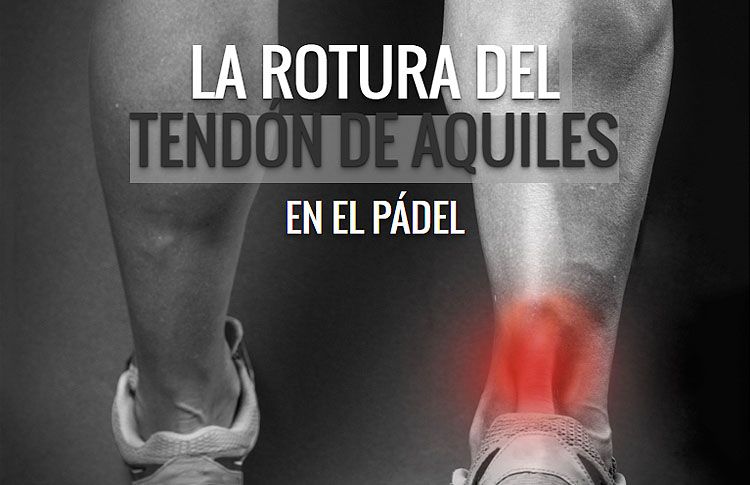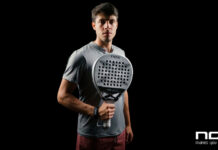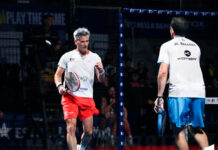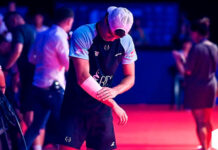Padel World Press .- The rupture of the Achilles tendon is not one of the most common injuries but it does involve a fairly long recovery. In it, there is a partial or total tear of the Achilles tendon.
The Achilles tendon It is very thick and powerful, of great importance for the function of the person's running and career. Thanks to it, the heel can be raised at the exact moment of the foot's release.
There are several injuries that can affect the Achilles tendon. These problems are increasingly frequent in athletes, due to overuse or poor physical preparation.
Tendonitis or Achilles tendinopathy It is the most frequent lesion of the Achilles tendon.
There are two types of Achilles tendonitis:
a) Tendinitis that occur in the area of tendon insertion with the calcaneus, called Achilles tendonitis insertional.
b) Tendinitis that occurs in the middle area of the tendon, known as Achilles tendinitis not insercional.
What is Achilles tendonitis?
Tendinitis or tendinopathy of the Achilles tendon is a lesion in which there is a degeneration of the collagen fibers that make up the Achilles tendon. With this wear or degeneration, the consequence is that the tendon loses its elasticity and its properties.
This Achilles tendon injury is usually caused by increased physical activity. It is accompanied by inflammation in the area around the tendon and, therefore, pain when doing sports. It should be noted that the process of this tendonitis weakens the tendon, which can sometimes cause a rupture of the Achilles tendon.
In that sense, it is important to note that there are many paddle players with Achilles tendinitis but very few of them will suffer a rupture of the Achilles tendon. Do not be afraid: not all tendinits end with breakage.
There are two types of Achilles tendon rupture according to the location:
-The rupture of the Achilles tendon in the middle area of the tendon, which is the most frequent.
-The rupture of Achilles with osseous avulsion, rare
According to the type of tendon rupture, a partial rupture of the tendon fibers or a complete rupture of the thickness of the tendon can occur.
In the case of rupture of the Achilles tendon of the mid-tendon area, a rupture of the collagen fibers of the distal part of the Achilles tendon occurs. The person notices very severe pain in the back of the leg, the so-called sign of the stone, and an inability to walk or run.
The diagnosis of Achilles rupture is made with ankle examination and confirmed with an ultrasound or an MRI.
In certain cases, a complete rupture of the Achilles tendon does not occur but a partial rupture of the tendon takes place, which leaves a% of the tendon intact and capable of functioning.
- Treatment of Achilles tendon tears
The treatment of partial ruptures of this tendon is almost always conservative, that is, without surgery and through a rehabilitation and physiotherapy process.
There is much controversy and controversy in the treatment of complete Achilles rupture.
Two types of treatments can be performed: Treatment by surgery or treatment called conservative, or without surgery.
Both have shown, with comparative studies, good final results in the medium and long term. Treatment with surgery, for example, allows a quicker recovery in the short term and a lower percentage of 're-breaks' of the tendon.
Currently, we recommend surgery for athletes active.
- The operation of the rupture of the Achilles tendon
There are several types of surgery for this injury. In our case, we prefer to make a small incision in the posterior area of the Achilles tendon to perform a direct suture with a type of special points, called 'Krakow Points'.
The strength of the suture is very high and you can start a recovery quickly.
- Recovery time after surgery for Achilles tendon rupture
At this time it is recommended to make a Advanced recovery protocol after the operation of Achilles tendon rupture.
The leg is immobilized with a plaster splint at 90º after the operation, without an equinus of the foot for about two weeks.
Two weeks after the operation, a Walker Type Orthosis is placed and partial loading is allowed. In turn, mobilization of the ankle with rubber bands is allowed.
Manel Ballester
Medical specialist in Traumatology and Orthopedic Surgery
* You can follow all the news of the world of paddle in our profiles of Facebook y Twitter as well as subscribe to our Newsletter .













